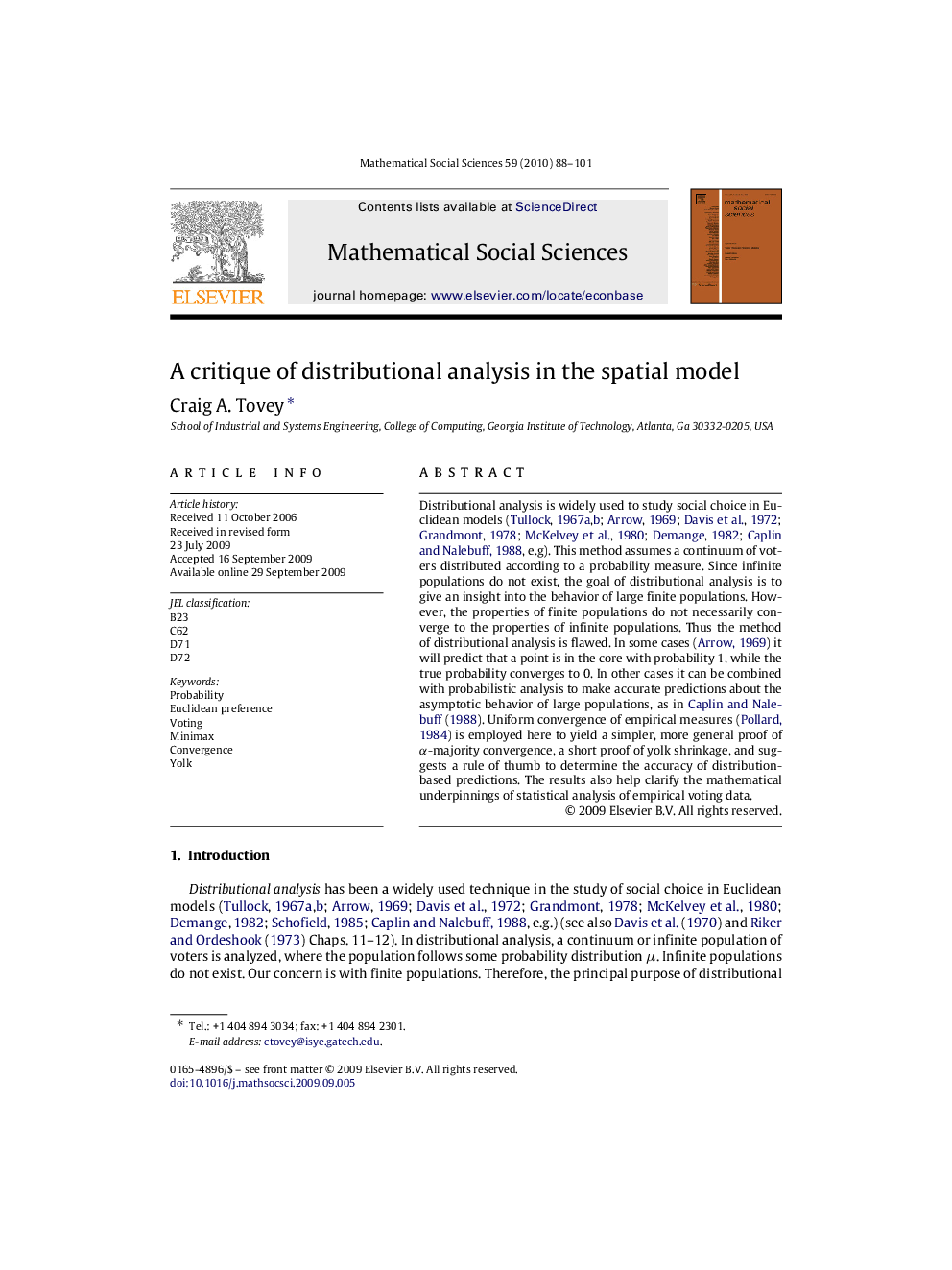| کد مقاله | کد نشریه | سال انتشار | مقاله انگلیسی | نسخه تمام متن |
|---|---|---|---|---|
| 973007 | 932738 | 2010 | 14 صفحه PDF | دانلود رایگان |
عنوان انگلیسی مقاله ISI
A critique of distributional analysis in the spatial model
دانلود مقاله + سفارش ترجمه
دانلود مقاله ISI انگلیسی
رایگان برای ایرانیان
کلمات کلیدی
موضوعات مرتبط
مهندسی و علوم پایه
ریاضیات
ریاضیات کاربردی
پیش نمایش صفحه اول مقاله

چکیده انگلیسی
Distributional analysis is widely used to study social choice in Euclidean models (Tullock, 1967a,b; Arrow, 1969; Davis et al., 1972; Grandmont, 1978; McKelvey et al., 1980; Demange, 1982; Caplin and Nalebuff, 1988, e.g). This method assumes a continuum of voters distributed according to a probability measure. Since infinite populations do not exist, the goal of distributional analysis is to give an insight into the behavior of large finite populations. However, the properties of finite populations do not necessarily converge to the properties of infinite populations. Thus the method of distributional analysis is flawed. In some cases (Arrow, 1969) it will predict that a point is in the core with probability 1, while the true probability converges to 0. In other cases it can be combined with probabilistic analysis to make accurate predictions about the asymptotic behavior of large populations, as in Caplin and Nalebuff (1988). Uniform convergence of empirical measures (Pollard, 1984) is employed here to yield a simpler, more general proof of α-majority convergence, a short proof of yolk shrinkage, and suggests a rule of thumb to determine the accuracy of distribution-based predictions. The results also help clarify the mathematical underpinnings of statistical analysis of empirical voting data.
ناشر
Database: Elsevier - ScienceDirect (ساینس دایرکت)
Journal: Mathematical Social Sciences - Volume 59, Issue 1, January 2010, Pages 88-101
Journal: Mathematical Social Sciences - Volume 59, Issue 1, January 2010, Pages 88-101
نویسندگان
Craig A. Tovey,